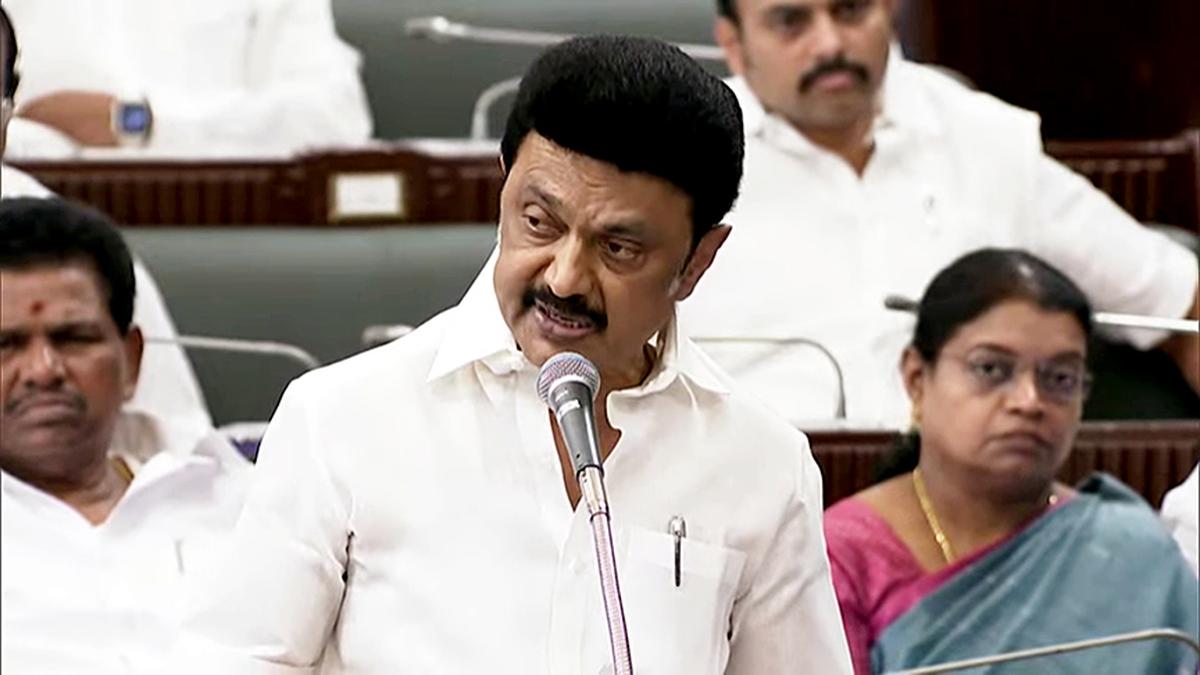(The Political Line newsletter is India’s political landscape, explained every week by Varghese K. George, Senior Editor, The Hindu. You can subscribe.) Here To get the newsletter delivered to your inbox every Friday.)
The Bharatiya Janata Party’s (BJP) Gujarat model of social engineering is facing stiff resistance in Karnataka. What happens in the southern state on this account will have ripples across the country, especially in Uttar Pradesh (UP) and Maharashtra. here’s why.
The BJP’s rainbow caste alliances either alienate or subdue dominant castes in each region – Patels in Gujarat; Jats in Rajasthan, Haryana and UP; Yadavs in UP and Bihar; and the Marathas in Maharashtra – all have been at the receiving end of this BJP structure.
The BJP wants to do the same with Lingayats and Vokkaligas in Karnataka through the state elections this May. These are the two caste groups that have the numbers, resources and networks to dictate the course of politics in the state. Even a BJP MLC-AH Vishwanath – accuses the RSS of pursuing a ‘hidden agenda’ of curbing the Lingayat and Vokkaliga leadership,
The BJP wants to project itself as a straight-jacket of Hindutva, which should include the identity of every other community under the national leadership. While giving representation to a wide range of communities, it abhors all forms of autonomous caste claims. With Ambedkarite mobilization and the Yadavs, the hammer of the legal system is used. It is not simply deployed against Jats, Patels, or Marathas – they are enticed or coerced into surrendering their independent and assertive streak.
Dominant communities that are used to unchecked power oppose this Hindutva mold of caste alliance. They resist and rebel – as we are seeing in Karnataka now. The BJP subdues caste groups by sidelining local chiefs who have the potential to challenge central authority.
The BJP replaced Lingayat community stalwart BS Yeddyurappa (BSY) with a more ‘repressible’ leader of the community, Basavaraj Bommai, as chief minister. One way to make the local leadership irrelevant is by not giving tickets to veterans, which gives an additional argument that fresh faces are being fielded in place of tired ones. BJP generally gets its advantage in elections.
The BJP has given 66 new faces out of the 212 tickets announced so far in Karnataka. The most interesting thing is that they are just that – newcomers. With little political influence of their own, they rely on Hindutva ideology and personal loyalty to a central leader. BL Santhosh, the party’s national general secretary, who hails from Karnataka, has been instrumental in the transformation being undertaken by the BJP in the state. The party has not gone all out to disturb local equations, and the appeasement they have done in the past weeks for BSY is a clear example.
The BJP wants to promote new leaders from both the Lingayat and Vokkaliga communities, but the communities do not accept them as leaders, instead seeking their own to gain power and prestige.
The Gujarat model of the BJP does not tolerate this demand. Just as the BJP tried to push Basavaraj Bommai to replace BSY as the leader of the Lingayats, it tried to rope in C.N. Tried to promote Ashwath Narayan as the Vokkaliga face in the party so that R.K. Ashoka could be overshadowed. The Vokkaligas regard the latter as their legitimate representative in the BJP and the Lingayats regard BSY as their own.
While on one hand BJP has tried to give place to many strong leaders, on the other hand it has tried to strengthen the hold of the central leadership at every level. it is triggered a churn, which was partly reflected in the exit of several leaders from the party,
More importantly, discontent is being expressed in individual constituencies. The BJP’s campaign since 2014 has been that candidates don’t matter; Only the lotus symbol and Prime Minister Narendra Modi do. Hindutva in Karnataka may not be mature enough for this. There is also an argument that Lingayat is a separate religion.,
When Mr. Modi took over as the Chief Minister of Gujarat in 2002, the Patels in the state were in control of the BJP. The Patels rebelled, formed separate parties, and tried to undermine Mr. Modi’s authority. By mobilizing a large social coalition around anti-Hindutva and anti-Muslim rhetoric, the BJP was able to ‘discipline’ the powerful Patels. They are now humble followers of the BJP, and the party chooses token leaders from the community for posts. In Karnataka, the party is dealing with two powerful communities, and nowhere is the social climate in the state as polarized on communal lines as in Gujarat. That’s the big picture (with inputs from Aditya Bhardwaj).
Federalism Path: Notes on Indian Diversity
sour milk
Gujarat-based Amul’s plan to expand its presence in Karnataka’s dairy market is stirring up the state’s politics, as the Congress and JD(S) accuse the BJP of hurting homegrown brand Nandini. more about the controversy Here And Here,
Tamil Nadu Assembly seeks constitutional check on the Governor

Tamil Nadu is advocating amendment of the constitution To change the requirement of laws passed by an elected assembly to obtain assent from a “nominated” governor. Read more on the latest standoff between Tamil Nadu Governor RN Ravi and Chief Minister MK Stalin Here,